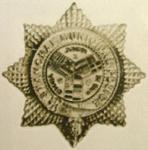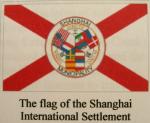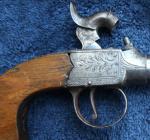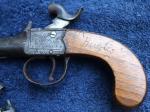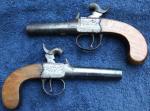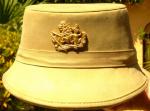-
Posts
13,225 -
Joined
-
Last visited
-
Days Won
22
Content Type
Profiles
Forums
Blogs
Gallery
Events
Store
Everything posted by Mervyn Mitton
-

Chinese Shanghai River Police badge
Mervyn Mitton replied to GeorgeCL's topic in Police Forces of the World
-

Chinese Shanghai River Police badge
Mervyn Mitton replied to GeorgeCL's topic in Police Forces of the World
-

Chinese Shanghai River Police badge
Mervyn Mitton replied to GeorgeCL's topic in Police Forces of the World
Hi - George. Sometimes when you go to fleamarkets and small shows, you may be lucky and find something of value that others haven't recognised. With your Shangahai River Police badge, you have hit the jackpot ! During the early and middle part of the 19th. century, China had become very weak from internal problems and the West had quickly seized on this. Britain fought several wars with China and one of the results was the setting-up of Hong Kong as an independent territory. Other countries followed this pattern - the Portuguese with Macau and the US in 1844, when by the treaty of Nanjing, they were granted a concession on mainland China. Britain and other European countries were also granted trading rights and territory and in 1863 Britain and the US joined together to form the Shanghai International Settlement. France never did join - but others did and a total of eleven countries were represented. The administration arm of the International Settlement was the Shangahai Municipal Council and under their control they had the Shanghai Municipal Police, the Fire Brigade and even a military force - the Shanghai Volunteer Corps. This Municipal Council was run entirely by white settlers and the first Chinese were not allowed until late 1920's. The seeds of their own destruction were sown when they allowed Chinese to settle within the territories borders and by the 1930's over one million were living in the City. Surprisingly, it was the only place that allowed Jewish refugees, fleeing from Germany, to settle without visas - this continued until the Japanese forbade any more in 1941. The Council continued until 1943 when the Japanese took full control and interned all foreigners. 1949 saw the return of Shanghai to the main Chinese Government. Some years ago I had an elderly lady on staff whose husband had been an Inspector in the Force. She kindly gave me his cap badge and some other pieces. I still have the badge and will get it sent over to photograph. All of these badges are very rare and highly collected all over the World. The badge is of silver and the flags of the 11 Nations are in enamel. I show a badge, but it is not in colour. Value wise, I would feel £300 - £400 ( $ 480 - $ 650). Now, we come to your Shanghai River Police badge. I have never heard of them - but they certainly existed and I show a picture of one of their small boats. They also had a larger launch - called 'Patrol'. The man shown looks to be wearing a uniform similar to a naval one of the time. This makes your badge incredibly rare and I can only estimate about £500 ($800) - as always you have to locate a buyer. My recommendation would be that you keep the badge - it can only increase in value in the future. Lookingv at the back, there is a mark and it is probably silver. I hope this info. is of help ? I must credit http://chp-ish-lyon.cnrs.fr/GetFile.php - from whom I took the photos. -

EGYPT and Medals of the SUDAN
Mervyn Mitton replied to a topic in Great Britain: Orders, Gallantry, Campaign Medals
As Michael indicated the 3rd Bn. of the 60th. did take part in the 1879 Zulu War. They were in some strength as 1064 medals were awarded. This was a time of confusion - the Zulu and Afghan Campaigns overlapped - in 1881 the first Boer War happened and in 1882 - the start of the Egyptian Campaign. The 3/60th. were in all three. The 1879 Roll shows only one Murphy - unfortunately, not Maurice... -

EGYPT and Medals of the SUDAN
Mervyn Mitton replied to a topic in Great Britain: Orders, Gallantry, Campaign Medals
Darrell. British Campaigns and Medals - May 25th. - Egypt Campaign 1882. I posted two Vanity Fair prints of the Khedive and his infamous Prime Minister - who caused all the trouble. They would make a fine centre piece for the proposed new collection. Which I think is an excellent idea - not that many collectors. -
Brian - don't be mean - let your wife have them... I think Canada has the same regs. as Britain and South Africa - Percussion and Flintlock are exempt from the Firearm Regulations. These used to be part of my collection - I had no proof of police use , but certainly of the type. Helen - Hi ! I agree with you, 1840's - give or take a few years. The Adams and Tranter revolvers were not far off and , of course, there were doubled barreled pistols and pepper box pistols to give a better rate of fire. Again, you are right - these are purpose made and not a conversion from flintlock. Dare I mention that magic word that begins with ' T ' ?
-

QUESTION ?
Mervyn Mitton replied to Mervyn Mitton's topic in Great Britain: Orders, Gallantry, Campaign Medals
The Trio is named : 88-13220 Pte. A. J. BRUCE A.V.C. My apologies - when these are dirty it is hard to see the initials - with a big glass, I can see that it is A.V.C. - not A.V.G. - I'm still not sure of unit -could it be Armoured Vehicle Corps ? Interestingly, he has a Defence and War for WW2 - privately named to : Sgt. A.J. Bruce. 1477415 R.A. Thankyou for previous suggestions. Mervyn -

1st AFGHAN WAR CAMPAIGN MEDAL
Mervyn Mitton replied to dcollect's topic in Great Britain: Orders, Gallantry, Campaign Medals
Paul - fascinating, I've never seen one before. Do you think it was mounted - there appear to be 'bumps' on the sides ? Bjorn - You should find a current value from Christie's or, Bonham,s and insure it if it it so rare. -
-
-
-
-
There have been some good posts on this sub-forum recently, so I thought I would add this matched pair of English pocket pistols. I appreciate that modern weapons tend to get more attention from the members, but, you can't ignore the older weapons from which these later ones were derived. The earliest firing mechanism was the wheel lock - where-by a lit fuse was applied when the trigger was pulled. Fine in good weather, but very prone to mis-firing. This gave way to the flintlock - much more efficient and with a pancover to help guard against wind and rain. Loading was of great importance and a finer powder had to be used for the pan to give ignition - course powder was difficult to ignite. As, I am sure, everyone will know - the flintlock depended on a knapped flint (one flaked to give an edge) being released to strike an iron plate - in doing so it opened the pan - allowed the powder to ignite from the spark, which in turn flamed down the touchhole and set-off the main charge of powder. The system was used on pistols, muskets and sporting weapons for over three hundred years. The biggest disadvantage was the short delay whilst all these processes caught-up and the weapon fired. Early in the 19th. Century a new invention was refined which was to take over from flintlocks. This was the Percussion Cap. The ignition charge of fine powder was contained in a sealed copper cap - which fitted over a nipple directly in contact with the main charge. The pistol or, musket, was still loaded in steps and using a ramrod, but was far more weather proofed, less cumbersome and, fired more quickly. Initially, these new pistols were very expensive - and rare. However, this dropped with time and they became the pistol of everday useage. Because they were usually single shot, these were normally bought and carried as a pair. The Belgians - particularly turned them out cheaply, but a good pair of English named ones will cost about £800 ($1200). The size shown here were known as Pocket pistols - and they were carried by both men and women. The flat sides to the grip allowed them to be carried concealed in pockets. For women - they were often known as Muff Pistols. To keep their hands warm they carried a fur hand protector - known as a muff and this neatly concealed the pistols. You have to remember that highwaymen were a way of life in those days. There were no restrictions on civilians carrying weapons until the 'Offences Against the Person Act' of (I think?) 1865. This stopped the carrying of firearms. This English pair have the name T.FLETCHER on one side of the breech and GLOUCESTER on the reverse. Interestingly, an owner has at some time scratched his name on the wooden grip - BAYLIS. They were often carried by the early Police - remember the film OLIVER - where the old Peelers in top hats, fire at Bill Sykes. The shop of T. Fletcher existed between 1841 to 1859 and was at 161 Westgate Street. Probably, he was only the retailer and they could easily have been made some years earlier. Gloucester is an important West Country City (it has a Cathedral and is, therefore, a City) and is near Bristol. I should have mentioned that these were loaded in advance for personal protection. They did not have ramrods - you unscrew the barrel - load in reverse order and tighten the barrel.
-
Cathey - welcome to a new Aussie member. I agree with Stuart - about three year intervals gives you coverage. Remember that dealers mainly buy from auctions - you can download directly from any number of London book auctions - the lists come-up frequently. (Interesting spelling for your name - Cathay was the old name for China...)
-
Thanks Ed - doesn't take too much to keep us 'golden oldies' amused - we just 'cackle' away into our toothless gums !!!
-

Temperance Medals
Mervyn Mitton replied to Thomas Symmonds's topic in Great Britain: Militaria: Badges, Uniforms & Equipment
Thomas - sorry, I missed this post and it is interesting. We all tend to concentrate on the official and valuable medals - sometimes this is a mistake. Temperance medals are a comment on the conditions of a period in our - fairly recent - history, and to my mind are an important collecting field in their own right. I'm surprised that so few have been added from other members - they're not that rare. -

Merchant Navy tunic
Mervyn Mitton replied to Snoopy's topic in Great Britain: Militaria: Badges, Uniforms & Equipment
I believe they are still issuing replacements. Get the address from the documents I posted with the medals and submit an application. Let us know what they say ? -

QUESTION ?
Mervyn Mitton replied to Mervyn Mitton's topic in Great Britain: Orders, Gallantry, Campaign Medals
Thanks Dave - that's something worth remembering, I didn't know it existed. I posted the doc. under British and Commonwealth - and thanks to Artur R we have an accurate translation. Turned out to be as rare as we thought. Mervyn -
Will - welcome back, hope everything is well. Stuart Bates has been trying to get in touch with you. This is an incredibly rare uniform and to have it so complete is really great. One query - Owen shows the white constables cap badge as brass and the african constables as white metal - not sure from the photo which material this is made from ? Best. Mervyn



